
Essential Fall Lawn Care Tips for a Lush Yard
Published: 30/10/2024 | Updated: 30/10/2024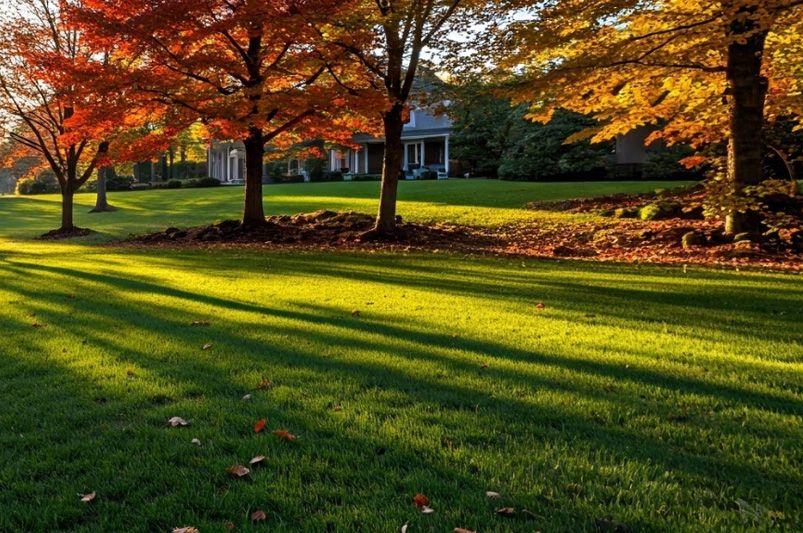
Key Highlights
- Early fall is the ideal time to prepare your lawn for winter and ensure its health in the spring.
- Essential fall lawn care tasks include raking leaves, adjusting the mowing routine, and watering appropriately for cooler temperatures.
- Aeration and overseeding are crucial practices to promote a healthy and thriving lawn.
- Fertilizing in the fall strengthens the lawn, but it's vital to choose the right fertilizer and apply it at the optimal time.
- Proper fall lawn care sets the stage for a beautiful and healthy lawn in the springtime.
Introduction
Early fall is a great time to strengthen your lawn for winter. It also sets the stage for a strong and green lawn in spring. Following a fall lawn care routine is like helping your lawn rest well. This way, it will wake up fresh and ready to grow when the weather gets warmer.


Preparing Your Lawn for Fall
Getting your lawn ready for fall is important for its health. As the seasons change, your lawn needs different care to handle the cold months ahead. If you ignore this fall lawn care, your lawn could get weak and be easy prey for diseases, pests, and damage in winter.
Preparing your lawn means moving from a time of growth to a slower, quieter time. Addressing issues like weed control, thatch build-up, and soil compaction helps create a strong foundation for your lawn. By taking the time to prepare now, you give your lawn a better chance to thrive next year.
The Importance of Early Preparation
Early fall is a great time to start working on your lawn for a healthy one next spring. As summer heat fades away, cool-season grasses get a lot of benefits from this time. The soil is warm, and the air is cool, which helps root growth and boosts nutrient absorption.
During the growing season, your lawn faces stress from people walking on it, heat, and mowing. Early fall is a perfect chance to fix any damage and prepare your lawn for winter. This means tackling any issues and helping your lawn rejuvenate.
By starting your fall lawn care routine early, your grass has plenty of time to recover and grow strong before winter arrives. This smart method leads to a tougher lawn that can better withstand the tough winter and come back strong in spring.
Assessing Your Lawn's Health
Before you start your fall lawn care routine, it is important to check how your lawn is doing. This means looking closely to find any problems. Doing a soil test can help you understand the pH level and nutrients in your soil. This way, you can spot any issues.
Next, look at the grass roots. Healthy roots usually look white or light brown and grow well. If you see a lot of dark, mushy roots, this might mean you are overwatering or have bad drainage. You may need to change how you water your lawn.
Also, check the thatch layer. This layer is made up of dead grass and organic matter on the soil surface. A little thatch can be good, but too much can prevent water and nutrients from getting through. If the thatch layer is more than half an inch thick, think about dethatching to help your lawn stay healthy.
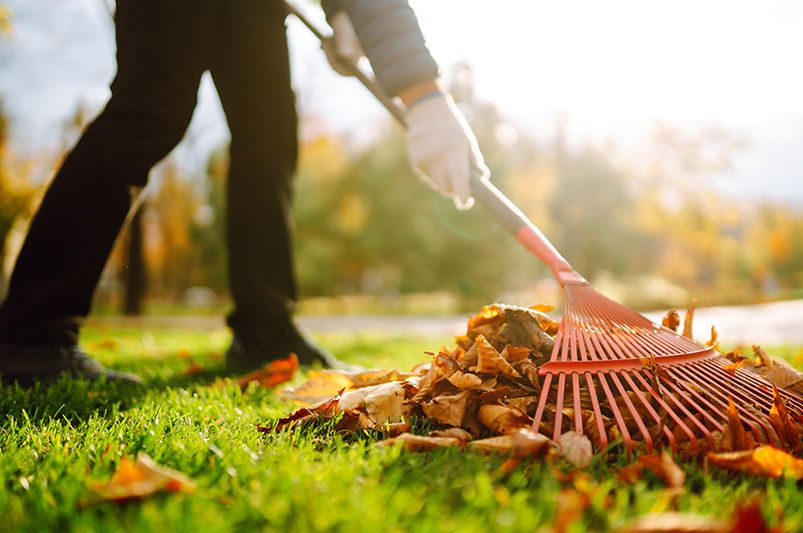
Essential Fall Lawn Maintenance Tasks
As the leaves change color and the air gets cooler, your lawn needs certain care to stay healthy during fall and get ready for winter. If you do these tasks carefully, they will help your lawn stay strong and lively in the long run.
Managing fallen leaves, changing how you mow, and watering your lawn wisely are all important. Each step helps keep your lawn bright and green. Let’s look at these key fall lawn maintenance tasks in detail.
Raking and Removing Leaves
Fallen leaves can make autumn look beautiful, but they can harm your lawn. A few leaves can break down and give nutrients. However, a thick pile of leaves blocks sunlight and stops grass growth.
Raking the leaves regularly is very important during fall. This not only improves how your lawn looks but also helps sunlight reach the grass blades. Raking often helps air flow around the grass and reduces the chance of fungus. The fungus can happen more with wet, decaying leaves.
Here’s how to rake leaves well:
- Rake regularly: Try to rake at least once a week during the busiest leaf fall or more if needed.
- Choose the right rake: Use a wide, flexible rake to collect leaves efficiently, without hurting the grass.
- Follow the wind: When you can, rake with the wind to make the job easier.
Adjusting Your Mowing Routine
As the weather gets cooler, you need to change how you mow your lawn. This keeps your grass healthy and ready for winter.
Lower the height of your lawn mower. Cut the grass a bit shorter than in summer. For most cool-season grasses, aim for a height of 2 to 2.5 inches in the fall. This height helps with photosynthesis and lowers the chances of snow mold and other diseases.
Also, make sure your mower blades stay sharp this fall. Dull blades tear the grass, which can cause diseases and stop the lawn from recovering during the cooler weather.
Watering Techniques for Cooler Weather
Adjusting how you water your lawn when temperatures drop is very important for fall lawn care. Cooler weather can lower evaporation rates, but you still need to keep an eye on how much moisture your lawn needs.
Even in cooler temperatures, try to give your lawn about an inch of water each week, rainfall included. Different types of grass need different amounts of water. So, it's best to change your watering schedule to meet your lawn's unique needs.
To check if your lawn needs water, do a simple finger test. Stick your finger into the soil. If it feels dry an inch down, then it’s time to water. You can also use a rain gauge to see how much it has rained and water your lawn as needed.
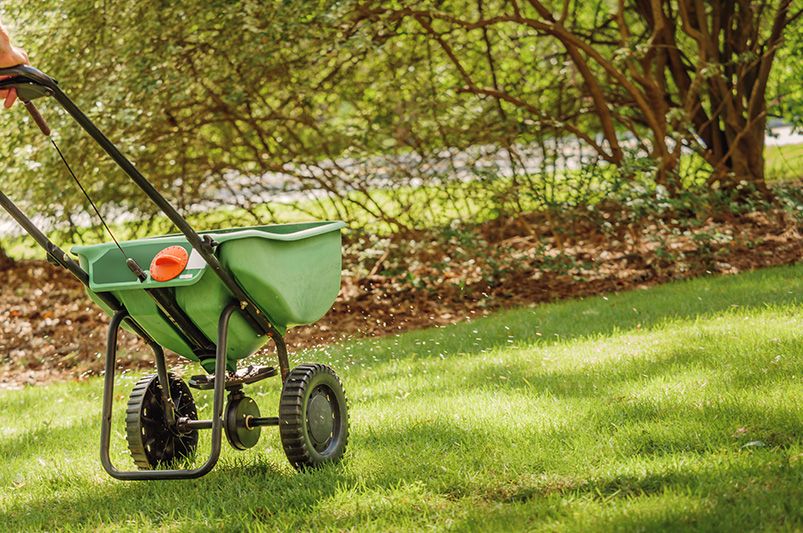
The Key Role of Aeration and Overseeding
Aeration and overseeding are key parts of a good fall lawn care plan. They help your lawn grow better and become healthier. These two methods work together to make the soil better, help your lawn take in nutrients, and create a thicker, stronger lawn.
Aeration allows air and nutrients to reach the soil. Overseeding adds new grass plants to fill in bare spots and makes the lawn denser. Knowing when and how to aerate and overseed is important to get the best results possible.
When and How to Aerate Your Lawn
Aeration is a crucial practice to alleviate soil compaction, a common issue that inhibits water, air, and nutrient penetration to the grass roots. Core aeration, which extracts small plugs of soil, proves most effective in relieving compaction and fostering a healthier lawn.
The optimal time for aeration in most regions is during the early fall, allowing the lawn sufficient time to recover before winter dormancy. However, the specific timing may differ based on the grass type and climate. For cool-season grasses, it's best to aerate around 30-45 days before the first frost.
|
Aeration Method |
Description |
Effectiveness |
|
Core Aeration |
Removes small plugs of soil |
Most Effective |
|
Spike Aeration |
Creates holes in the soil without removing plugs |
Less Effective |
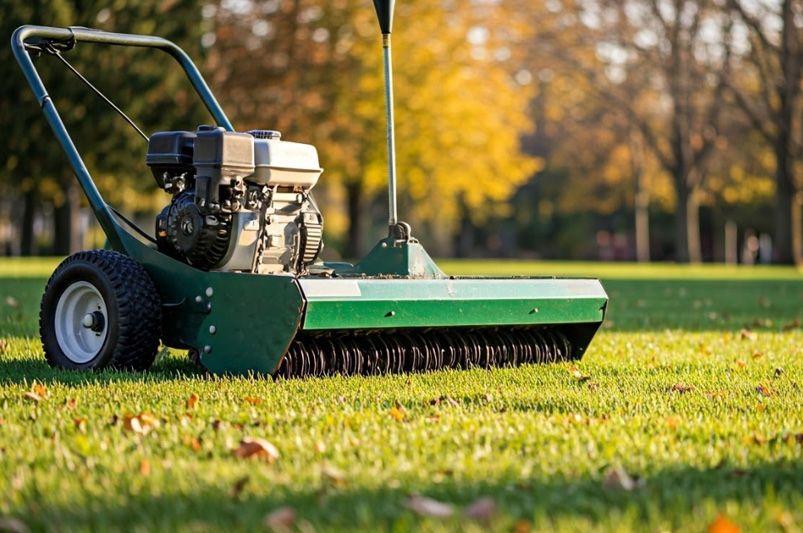
Choosing the Right Seeds for Overseeding
Overseeding is when you spread grass seed on an existing lawn. It is a great way to make your lawn thicker, fill bare spots, and improve its health and look. If you combine overseeding with aeration, you can get even better results.
Choosing the right grass seed is very important for overseeding to work. Think about your area's climate, soil type, and how much sun your lawn gets. Perennial ryegrass and Kentucky bluegrass are good options because they are strong and can grow in different conditions.
It's a good idea to ask your local nursery or a lawn care expert about the best grass seed types for your area and lawn. To get the best outcome, use high-quality seed with a good germination rate.
Fertilization Strategies for Autumn
As summer turns into fall, your lawn needs different nutrients. Fall fertilization is very important. It helps prepare your lawn for winter and keeps it healthy for spring. This process gives the right nutrients for root growth, increases winter strength, and helps new growth in the future.
It's key to understand how fall fertilization works. Picking the right type of fertilizer, applying it at the right time, and using the suggested amounts are all important for good fall lawn care and getting the best results.
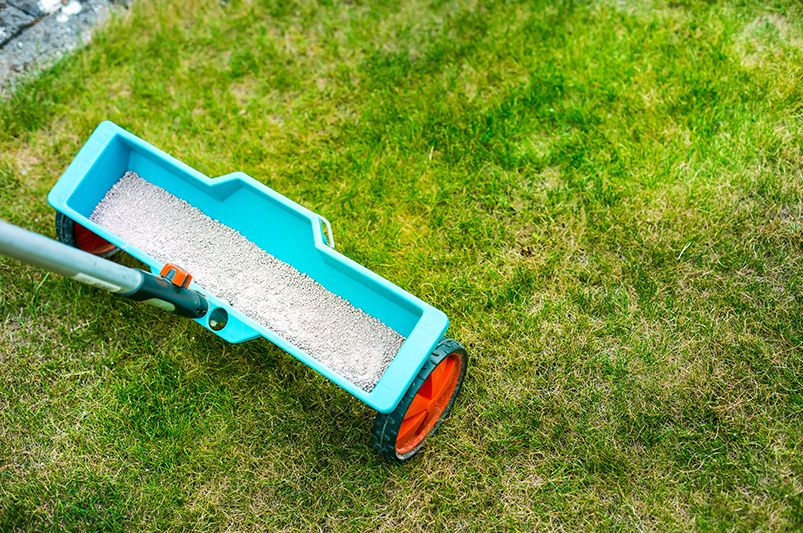
Selecting the Appropriate Fall Fertilizer
Choosing the right fall fertilizer is very important. It helps your lawn get the nutrients it needs without pushing too much new grass growth before winter. Look for a fertilizer that has more potassium. Potassium helps strengthen grass roots, makes the grass tougher in the cold, and helps it fight off diseases.
Using a slow-release fall fertilizer is a good idea. This type of fertilizer gives nutrients slowly over time. It keeps your lawn well-fed during the fall and winter. Slow-release fertilizers are less likely to burn the grass. They also mean you won’t have to apply fertilizer as often.
If you have just overseeded your lawn, choose a starter fertilizer made for new grass. These fertilizers have more phosphorus. This helps new grass seeds grow strong roots.
Optimal Timing for Fertilization
Timing is very important for fall fertilization. If you apply it too early, the grass can grow too much. This may make it weak against winter damage. If you do it too late, the grass won’t have enough time to take in the nutrients before resting for winter.
The best time to fertilize in the fall is usually between late October and early November. This can change based on where you live and your grass type. This time frame helps the grass absorb nutrients well. It also helps the roots grow stronger for winter.
Before you fertilize, mow your lawn shorter than normal. This helps the fertilizer get to the soil surface better. After applying the fertilizer, water it well. This helps activate the nutrients and allows them to soak into the soil and reach the grass roots.
Conclusion
To keep your yard looking great this fall, you need to prepare early. Check the health of your lawn and change how you mow if needed. Water your lawn correctly. Aerate and overseed your grass carefully for the best results. Pick the right seeds for overseeding and use the right fertilizer for fall. By using these important fall lawn care tips, you can have a healthy and bright yard. If you like these tips, share them on social media to help others get a beautiful lawn too.
Frequently Asked Questions
How often should I water my lawn in the fall?
Try to give your lawn about one inch of water each week, even as the weather gets cooler. This includes any rain that falls. You should change how much you water depending on the type of grass you have. Keep an eye on the moisture levels too. This is part of your fall lawn care plan.
Is it better to rake leaves or leave them?
A few fallen leaves can help the soil. However, a thick layer of leaves can block light and harm the lawn. Raking leaves is very important for lawn maintenance. If you rake regularly, it helps sunlight reach the grass. This is essential for good grass growth.
Need Assistance for a Complete Landscape Makeover?
Shrubhub’s landscape design packages can significantly transform the lives of homeowners by delivering customized, professional landscaping plans tailored to their unique space and personal style. With the ease of online collaboration, you are guided step-by-step through a design process that fundamentally reshapes your outdoor environment. The result is an aesthetically pleasing and functional outdoor living area that maximizes the potential of your property.


